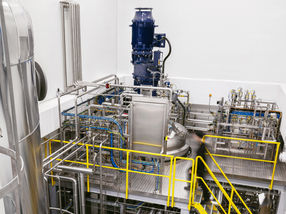Generic Biologics to Enter the U.S. Market by 2008
Worldwide Generic Biologics Market to Reach $12 Billion by 2010
06-Oct-2003
The imminent approval of generic biologics by the FDA, along with a positive response to Sandoz' generic somatropin by the EMEA, is triggering alarm from brand innovators, such as Amgen and Genentech. In a report entitled Generic Biologics: A Strategic Market Outlook and Business Analysis, analysts from Front Line Strategic consulting, Inc. express that despite inevitable legal disputes and the high cost of manufacturing, several generic biologics players are poised to enter the marketplace.
In the report, Front Line notes that a number of first-mover generic companies, such as Dragon, BioGenerix, and STADA, are planning to produce generic biologics that have large existing markets. Recombinant human insulin and erythropoietin are projected to account for 27% and 36% of the biogenerics market, respectively, by 2010. The least complex biologics, such as insulin and somatropin, will likely gain generic FDA approval by 2005, encouraging some companies to prepare for this entry date.
According to Front Line's research and analysis, the estimated size of the generic biologics market will reach $30M worldwide in 2003, and nearly $12B in 2010, given certain assumptions regarding the development of a regulatory approval process in the U.S., price discounts, and market penetration. Growth will likely be hindered, however, by price erosion due to generic competition, complications with biologics manufacturing, and the introduction of superior, second-generation brand products.
"Medicare has not been fully reimbursing costly biologics, some costing over $100,000 per patient per year. Hospitals will have the financial incentive to administer biogenerics, which will help speed their acceptance and expand usage," says Julie Watts, analyst, Strategic Market Reports division for Front Line.
Other news from the department business & finance

Get the life science industry in your inbox
From now on, don't miss a thing: Our newsletter for biotechnology, pharma and life sciences brings you up to date every Tuesday and Thursday. The latest industry news, product highlights and innovations - compact and easy to understand in your inbox. Researched by us so you don't have to.
























































